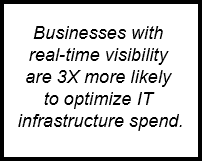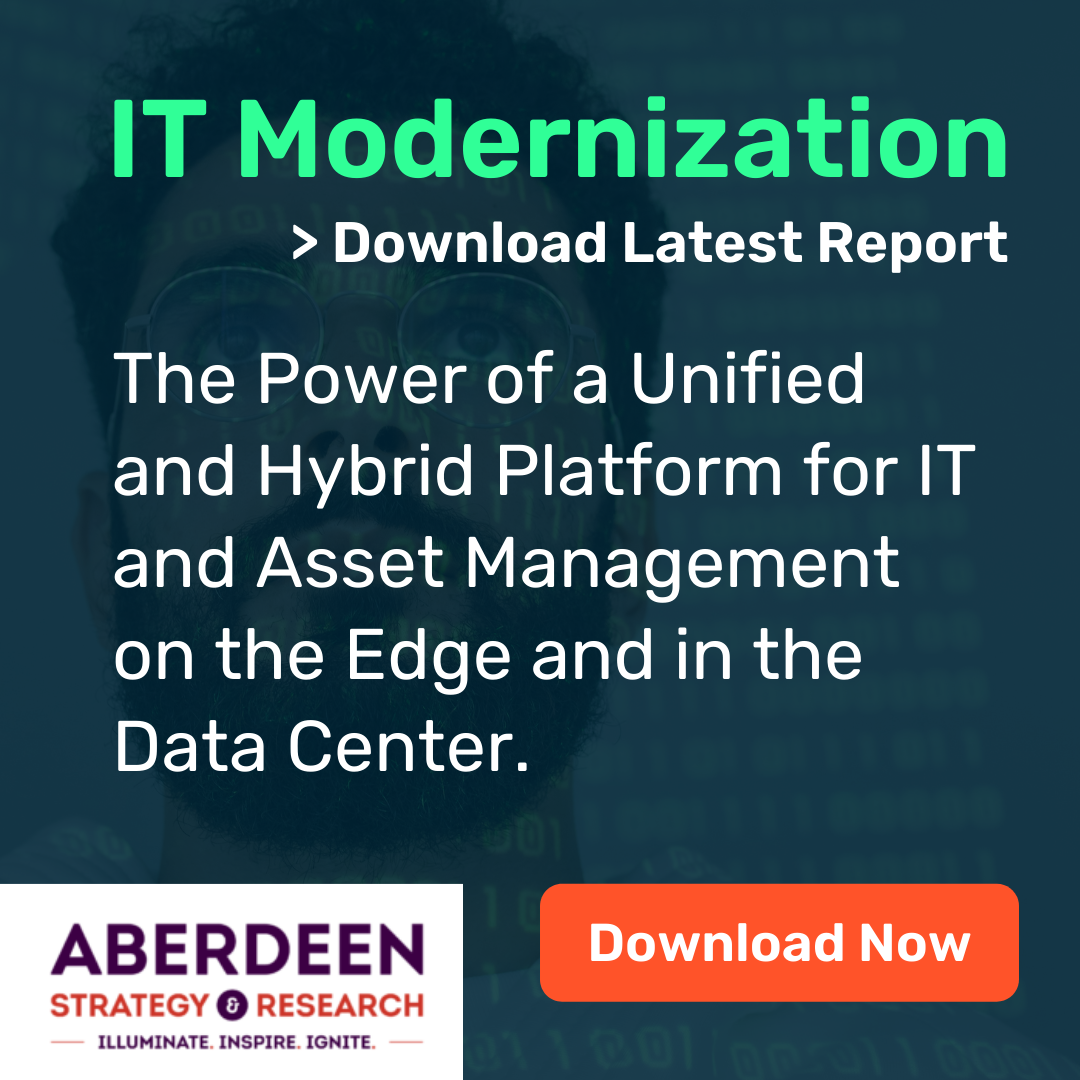
Top Strategies for IT Modernization at the Edge and in the Data Center
For so many reasons, 2021 will likely be remembered as the year that digitization became imperative. I’m betting that 2022 marks the advent of intelligent IT modernization. Solutions are emerging that create core-to-edge infrastructure visibility, give IT teams real-time monitoring and integrate AI (artificial intelligence) to automate management. These solutions are emerging in concert with “traditional” service platforms that put people in control of assets and applications.
Why are we seeing this now? Necessity is the mother of innovation, so to speak. In this case, necessity is the proliferation of multi-cloud and hybrid cloud strategies designed to establish competitive advantage, reduce costs, connect remote workers and future-proof businesses.
As you’ll learn in this new Aberdeen Group Knowledge Brief, “Businesses are finding that these innovations bring as much complexity and challenges as they do opportunities and agility.” In the report, VP and Principal Analyst Jim Rapoz dives into those observations and other research findings:
- 50% of organizations say controlling the cost of IT infrastructure is a key challenge
- IT modernization leaders are 35% more likely to have implemented a platform for providing ubiquitous visibility into their infrastructure, including data center systems and assets
- Businesses with real-time visibility are 3X more likely to optimize IT infrastructure spend
Of course, I’m being careful here not to steal thunder from the report’s author, Rapoz. There’s much more to learn from the brief.
How Does Colocation Fit into IT Modernization?

Not long ago, there was talk that the cloud would kill the data center. The opposite has come to pass. As enterprises are moving to a digital-first approach to business, they recognize that shifting processes into colocation and the public cloud, and keeping some workloads on-premises, enables them to accelerate digital transformation and, now, take the next step – IT modernization.
Regarding cost, the possibility to engage business-critical services on a pay-per-use basis contributes to reaching TCO (total cost of operation) objectives. Cloud and colocation create the opportunity to “get out of the data center business” and focus on top priorities such as improving customer experience, instead of carrying the costs of operating an on-premises data center.
Geographic proximity and redundancy lead to elevated customer experiences. Deploying infrastructure in data centers close to users, especially as IoT and edge computing end points proliferate, enables low latency and consistent application performance; interconnection between data centers assures resilience and uptime.
Colocation also provides control over data accessibility and simplifies compliance. Each enterprise can determine where to place their data, and their trust, with colo offering the same degree of governance as an on-prem environment – at lower cost than cloud and in facilities built for security and regularly audited for compliance.
Colocation offers additional cloud cost reductions through direct connection to CSPs (cloud services providers). Further, “hubs” of adjacent businesses within a colocation data center can cross connect, speeding transactions within digital business ecosystems and, as CoreSite says, enabling a native digital supply chain.
IT modernization facilitates fulfilling the desire for XaaS (everything as a service) and enables integrating monitoring and control platforms available through digital ecosystems, or digital “communities,” if you will.
How Does Monitoring and Control Happen with Colocation?

With colocation serving as a hub for interconnection, engaging service providers that specialize in infrastructure monitoring and control is streamlined. I’ll point to two examples within the CoreSite ecosystem.
- Uila Networks – Uila provides a single pane of glass to monitor performance and optimize resources across VMware, Microsoft Hyper-v, Amazon Web Services (AWS), Microsoft Azure and Google Cloud Platform (GCP) environments.
- Zenlayer – Zenlayer is an IaaS (internet as a service) provider that, among many other areas of expertise, offers cloud networking and edge data center services aimed at improving user experiences.
Each company offers the type of platform that is the focus of the Aberdeen Knowledge Brief.
As a CoreSite colocation customer, you can quickly add third-party services you need to tailor, monitor and control a flexible, modern IT infrastructure.
I highly encourage you to download The Power of a Unified and Hybrid Platform for IT and Asset Management on the Edge and in the Data Center by the Aberdeen Group.
Then, please get in touch with us to discuss your IT modernization roadmap for 2022 and learn how we can help accelerate the journey.









